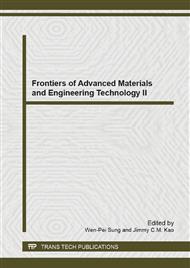p.1556
p.1563
p.1567
p.1571
p.1576
p.1580
p.1584
p.1588
p.1592
Aquatic Logistics Model Based on Supply Chain Management
Abstract:
Food logistics is a modern logistics system in highly specialized sectors of logistics. The logistics industry has distinctive characteristics. According to the characteristics of modern aquatic logistics, good work is associated with people's livelihood. Products logistics model basically remain in the traditional areas. From the status quo of China's logistics model, through the status of products logistics development research, analyzes the main problems exist in China's aquatic products logistics model. It was constructed based on supply chain management, logistics model supply chain management.
Info:
Periodical:
Pages:
1576-1579
Citation:
Online since:
April 2014
Authors:
Keywords:
Price:
Сopyright:
© 2014 Trans Tech Publications Ltd. All Rights Reserved
Share:
Citation:


